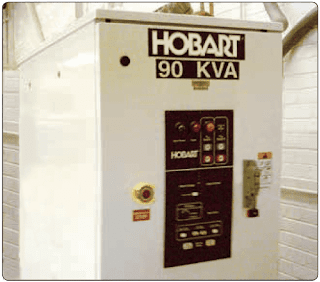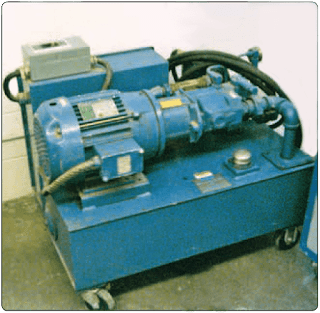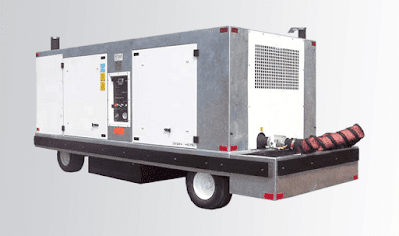Servicing Aircraft Air/Nitrogen Oil and Fluids
Checking or servicing aircraft fluids is an important maintenance function. Before servicing any aircraft, consult the specific aircraft maintenance manual to determine the proper type of servicing equipment and procedures. In general, aircraft engine oil is checked with a dipstick or a sight gauge. There are markings on the stick or around the sight gauge to determine the correct level. Reciprocating engines are to be checked after the engine has been inactive, while the turbine engine must be checked just after shutdown. Dry sump oil systems tend to hide oil that has seeped from the oil tank into the gear case of the engine. This oil does not show up on the dipstick until the engine has been started or motored.If serviced before this oil is pumped back into the tank, the engine overfills. Never overfill the oil tank. Oil foams as it is circulated through the engine. The expansion space in the oil tank allows for this foaming (oil mixing with air). Also the correct type of oil must be used for the appropriate engine being serviced. Hydraulic fluid, fuel, and oil, if spilled on clothes or skin, must be removed as soon as possible because of fire danger and health reasons.
When servicing a hydraulic reservoir, the correct fluid must be used. Normally, this can be determined by the container or by color. Some reservoirs are pressurized by air that must be bled off before servicing. Efforts must be made to prevent any type of contamination during servicing. Also, if changing hydraulic filters, assure that the pressure is off the system before removing the filters. After servicing the filters (if large amounts of fluids were lost) or system quantity, air must be purged and the system checked for leaks. While servicing tires or struts with high-pressure nitrogen, the technician must use caution while performing maintenance. Clean areas before connecting filling hose and do not overinflate.
Ground Support Equipment
Electric Ground Power Units
Ground support electrical APUs vary widely in size and type. However, they can be generally classified by towed, stationary, or self-propelled items of equipment. Some units are mainly for in-hangar use during maintenance. Others are designed for use on the flight line, either at a stationary gate area or towed from aircraft to aircraft. The stationary type can be powered from the electrical service of the facility. The movable type ground power unit (GPU) generally has an onboard engine that turns a generator to produce power. Some smaller units use a series of batteries. The towed power units vary in size and range of available power.The smallest units are simply high-capacity batteries used to start light aircraft. These units are normally mounted on wheels or skids and are equipped with an extra-long electrical line terminated in a suitable plug-in adapter.
Larger units are equipped with generators. Providing a wider range of output power, these power units are normally designed to supply constant-current, variable voltage DC electrical power for starting turbine aircraft engines and constant-voltage DC for starting reciprocating aircraft engines. Normally somewhat top-heavy, large towed power units are towed at restricted speeds, and sharp turns are avoided. An example of a large power unit is shown in Figure 1.
Self-propelled power units are normally more expensive than the towed units and, in most instances, supply a wider range of output voltages and frequencies. The stationary power unit, shown in Figure 2, is capable of supplying DC power in varying amounts, as well as 115/200-volt, 3-phase, 400-cycle AC power continuously for 5 minutes.
When using ground electrical power units, it is important to position the unit to prevent collision with the aircraft being serviced, or others nearby, in the event the brakes on the unit fail. It must be parked so that the service cable is extended to near its full length away from the aircraft being serviced, but not so far that the cable is stretched or undue stress is placed on the aircraft electrical receptacle.
Observe all electrical safety precautions when servicing an aircraft. Additionally, never move a power unit when service cables are attached to an aircraft or when the generator system is engaged.
Hydraulic Ground Power Units
Portable hydraulic test stands are manufactured in many sizes and cost ranges. [Figure 3] Some have a limited range of operation, while others can be used to perform all the system tests that fixed-shop test stands are designed to perform.
Hydraulic power units, sometimes called a hydraulic mule, provide hydraulic pressure to operate the aircraft systems during maintenance. They can be used to:
- Drain the aircraft hydraulic systems.
- Filter the aircraft system hydraulic fluid.
- Refill the aircraft system with clean fluid.
- Check the aircraft hydraulic systems for operation and leaks.
This type of portable hydraulic test unit is usually an electrically-powered unit. It uses a hydraulic system capable of delivering a variable volume of fluid from zero to approximately 24 gallons per minute at variable pressures up to 3,000 psi.
Operating at pressures of 3,000 psi or more, extreme caution must be used when operating hydraulic power units. At 3,000 psi, a small stream from a leak can cut like a sharp knife. Therefore, inspect lines used with the system for cuts, frays, or any other damage, and keep them free of kinks and twists. When not in use, hydraulic power unit lines are to be stored (preferably wound on a reel) and kept clean, dry, and free of contaminants.
Ground Support Air Units
Air carts are used to provide low-pressure (up to 50 psi high volume flow) air that can be used for starting the engines and heating and cooling the aircraft on the ground (using the onboard aircraft systems). It generally consists of an APU built into the cart that provides bleed air from the APU’s compressor for operating aircraft systems or starting engines. [Figure 4]
Ground Air Heating and Air Conditioning
Most airport gates have facilities that can provide heated or cooled air. The units that cool or heat the air are permanent installations that connect to the aircraft’s ventilation system by use of a large hose. Portable heating and air conditioning units can also be moved close to the aircraft and connected by a duct that provides air to keep the cabin temperature comfortable.
Oxygen Servicing Equipment
Before servicing any aircraft, consult the specific aircraft maintenance manual to determine the proper types of servicing equipment to be used. Two personnel are required to service an aircraft with gaseous oxygen. One person is stationed at the control valves of the servicing equipment, and one person is stationed where he or she can observe the pressure in the aircraft system. Communication between the two people is required in the event of an emergency.
Do not service aircraft with oxygen during fueling, defueling, or other maintenance work that could provide a source of ignition. Oxygen servicing of aircraft is to be accomplished outside hangars.
Oxygen used on aircraft is available in two types: gaseous and liquid. The type to use on any specific aircraft depends on the type of equipment in the aircraft. Gaseous oxygen is stored in large steel cylinders, while liquid oxygen (commonly referred to as LOX) is stored and converted into a usable gas in a liquid oxygen converter.
Oxygen is commercially available in three general types: aviator’s breathing, industrial, and medical. Only oxygen marked “Aviator’s Breathing Oxygen” that meets Federal Specification BB-0-925A, Grade A, or its equivalent is to be used in aircraft breathing oxygen systems. Industrial oxygen may contain impurities that could cause the pilot, crew, and/ or passengers to become sick. Medical oxygen, although pure, contains water that can freeze in the cold temperatures found at the altitudes where oxygen is necessary.
Oxygen Hazards
Gaseous oxygen is chemically stable and is nonflammable. However, combustible materials ignite more rapidly and burn with greater intensity in an oxygen-rich atmosphere. In addition, oxygen combines with oil, grease, or bituminous material to form a highly-explosive mixture that is sensitive to compression or impact. Physical damage to, or failure of, oxygen containers, valves, or plumbing can result in an explosive rupture with extreme danger to life and property. It is imperative that the highest standard of cleanliness be observed in handling oxygen and that only qualified and authorized persons be permitted to service aircraft gaseous oxygen systems. In addition to aggravating the fire hazard and because of its low temperature (it boils at −297 °F), liquid oxygen causes severe “burns” (frostbite) if it comes in contact with the skin.




